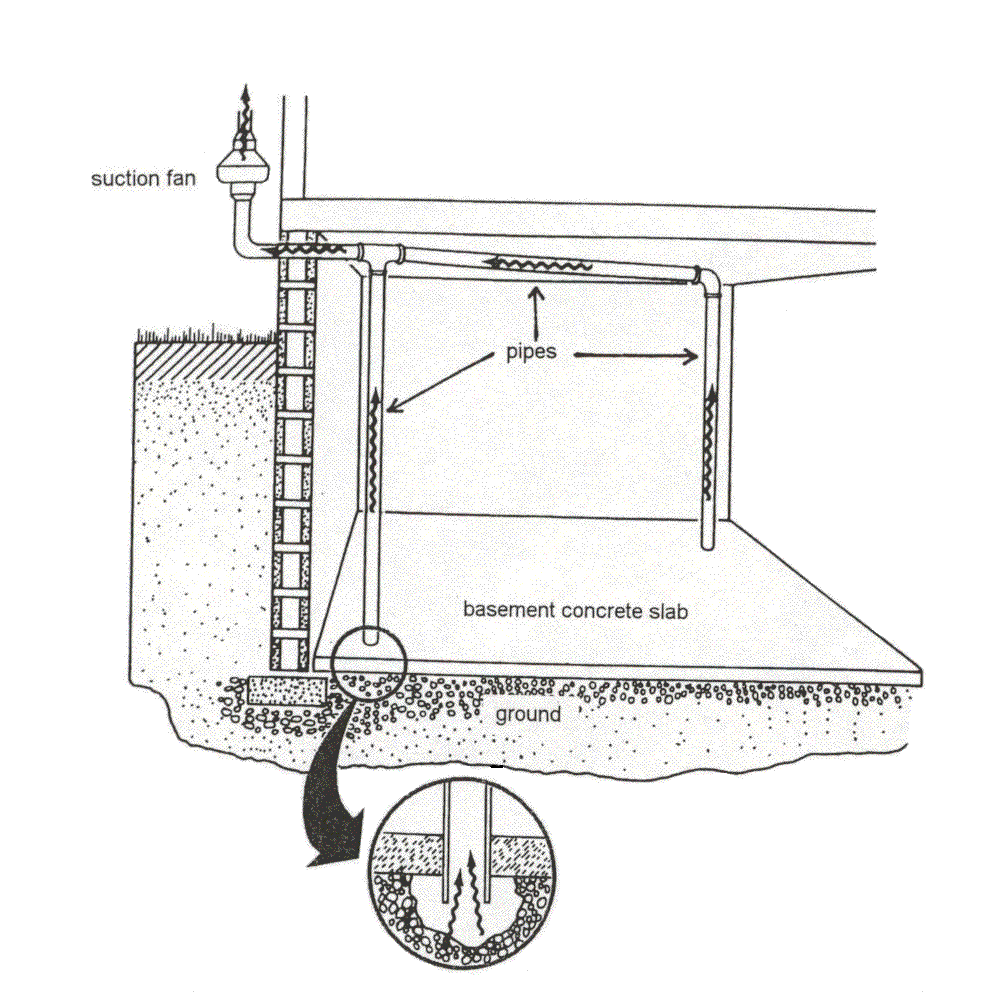|
|
Agency for Toxic Substances and Disease Registry
Radon Toxicity
Radon Abatement
- The cost of remediation to reduce radon levels in the average home is about $1,200.
- Available procedures to lower indoor radon levels are, dollar for dollar, very effective in saving lives.
How cost-effective is radon mitigation compared to other investments in health protection? The Swedish government plans to spend approximately $1,000 per home reducing high radon levels, resulting in about $10,000 in savings per life spared. EPA estimates that the cost of remediation in most homes is less than $1,500. The cost of radon testing and mitigation per life saved compares favorably with that of other government programs.
If excessive levels of indoor radon are found in a structure, low-cost, quick-fix methods should be implemented first. These methods include limiting the amount of time spent in contaminated areas and increasing ventilation in the areas. It is wise to consult with the state radiation protection office before implementing major abatement projects. Information on methods of reduction can be obtained from several sources listed in the Suggested Reading and Sources of Information sections.
In addition to increasing ventilation, radon control measures include sealing the foundation, subslab depressurization (creating negative pressure in the soil), pressurizing the home, and using air-cleaning devices. Methods of increasing ventilation include opening windows, ventilating basements and crawl spaces, ventilating sump-holes and floor drains to the outside of the house, and increasing air movement with ceiling fans. Ventilation must be modified properly, however, because increased ventilation can depressurize the house in some cases, causing an increase of soil gas entry to the home. Heat exchangers provide a way of bringing fresh air indoors without major heat loss, but these must be properly balanced or they can worsen the problem.
Preventing soil gas entry is more important than increasing whole-house ventilation. Prevention of soil gas entry involves sealing the foundation and depressurizing the soil. Potentially useful methods for prevention of soil gas entry include using vapor barriers around the foundation, sealing cracks and holes with epoxies and caulks, and sealing the crawl space from the rest of the house. Subslab depressurization can reduce radon levels by as much as 99%. Suction puts the soil at a lower pressure than the inside of the home, preventing inward migration of soil gas. Subslab depressurization involves sinking ventilation pipes below the foundation and continuously pumping air out (Figure 2). The cost to install subslab depressurization in an existing home is approximately $1,000 to $2,500; annual utility costs are about $100. The state radon office can be consulted to obtain a listing of radon mitigation contractors that have passed the EPA Radon Contractor Proficiency program. If the equipment is installed during construction of the home, however, the cost of subslab depressurization is considerably less; it is much easier to install pipes during construction than to retrofit later. Physicians and other health professionals can perform a public service by becoming acquainted with local building codes and urging local jurisdictions to include the installation of capped pipes terminating in a space under the foundation to allow for later subslab depressurization if needed.

Figure 2. Subslab Depressurization.
Pipes, attached to a suction fan, are inserted into the ground below the basement floor, creating a low-pressure region under the house. Adapted from Brenner (1989).
| 7. | Where in your patient's home should detectors be placed for radon screening? |
| 8. | What can you as a health professional do to decrease the risk of lung cancer among your patients? |
Previous Section Next Section
|